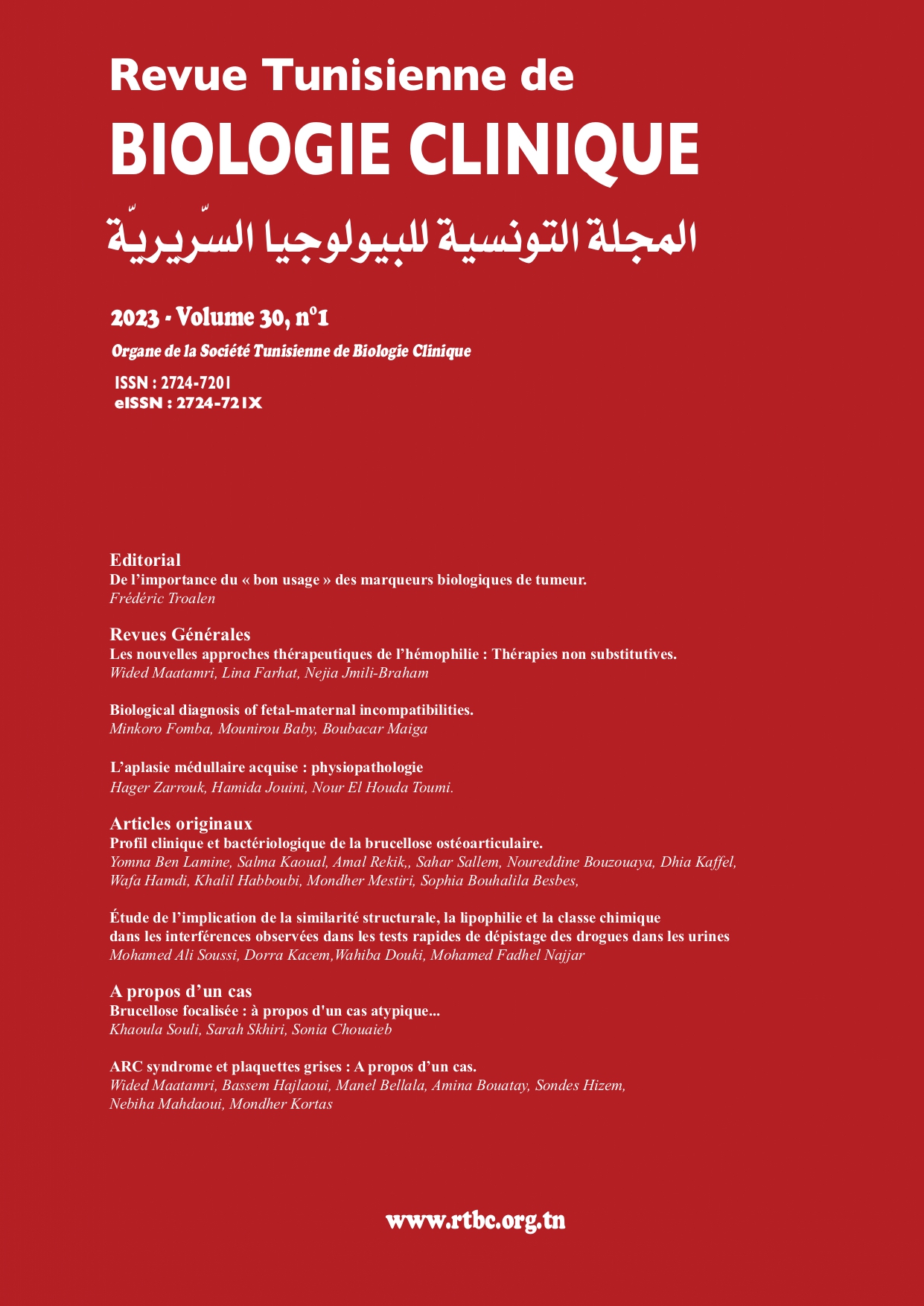Abstract
Acquired aplastic anemia is a rare pathology. It is two to three times more common in Asia than in Europe and America. It is clinically and nosologically heterogeneous. In 70-80% of cases, it is idiopathic; however some environmental and genetic risk factors have been identified. Among these factors, we find some drugs, viruses, autoimmune hepatitis, autoimmune diseases, pregnancy and HLA polymorphism. Diagnostic criteria include a stable decrease in two or three blood cell lines and poor marrow biopsy. Idiopathic acquired aplastic anemia has no specific marker and is mainly a diagnosis of exclusion of other etiologies of bone marrow failure. This pathology can be treated either by allogeneic hematopoietic stem cell transplantation or by immunosuppressive therapy combining anti-thymocyte globulin with cyclosporine A. Eltrombopag, a synthetic thrombopoietin mimetic, has been shown to be effective in the treatment of refractory forms and as first-line therapy in combination with standard immunosuppressive therapy. Supportive therapy based on blood transfusions, infection prophylaxis and prevention of hemochromatosis has helped improve the prognosis of this hemopathy. This update reviews the epidemiology, diagnosis and treatment of acquired aplastic anemia.

This work is licensed under a Creative Commons Attribution 4.0 International License.
Copyright (c) 2023 Revue Tunisienne de BIOLOGIE CLINIQUE

